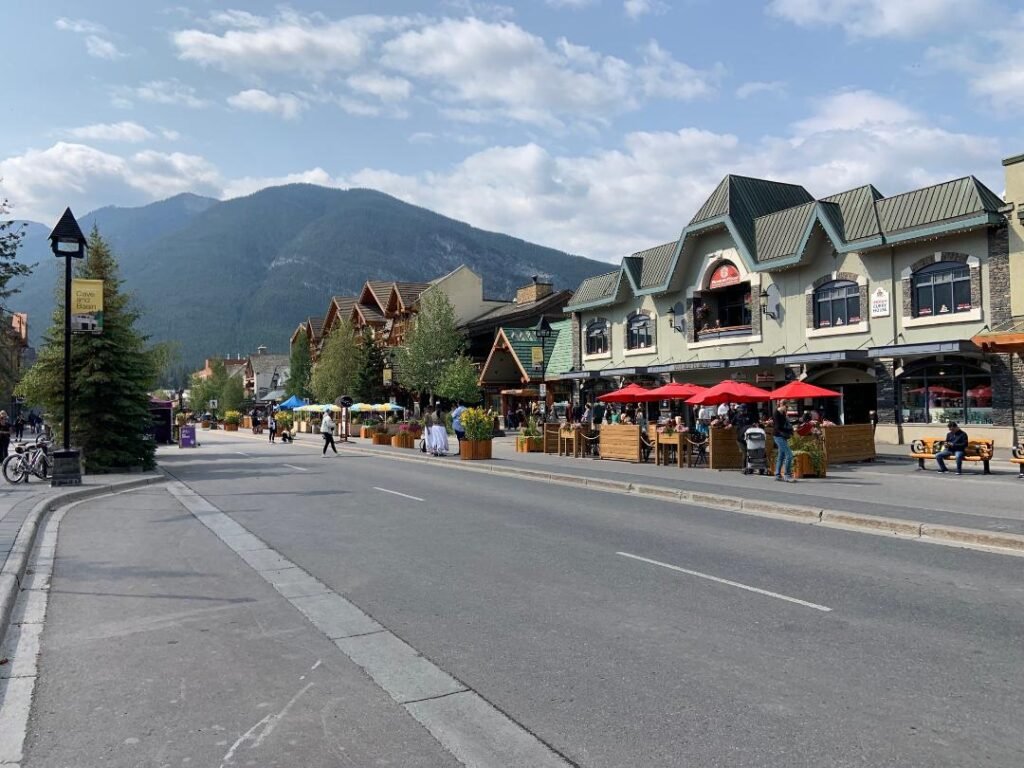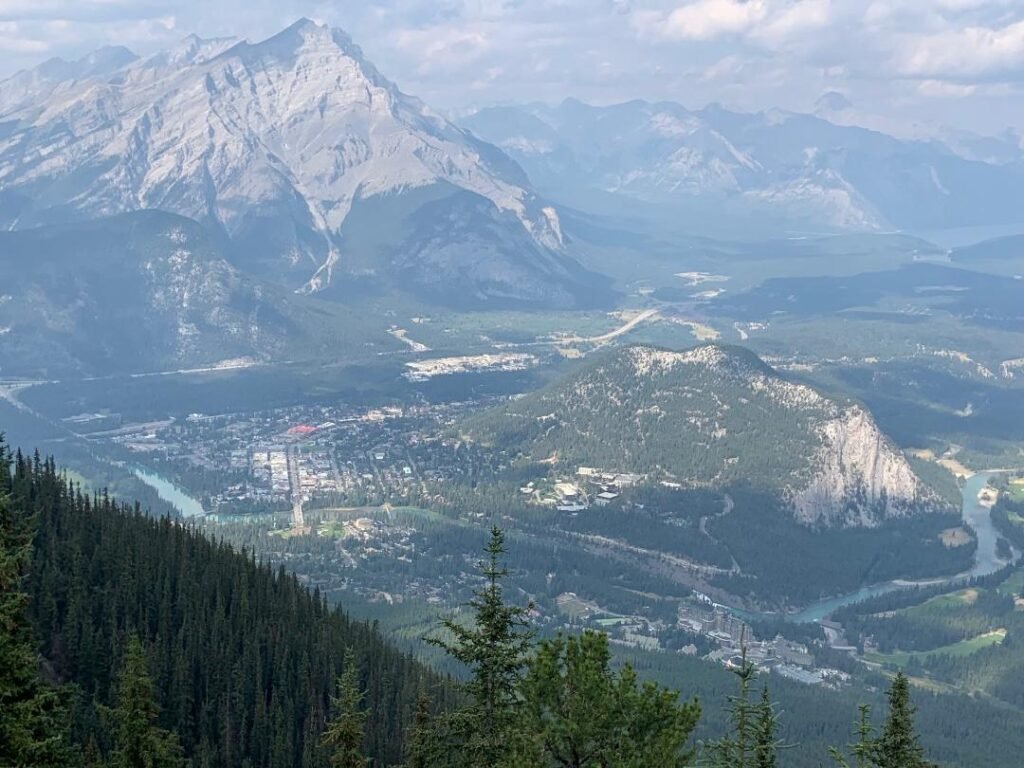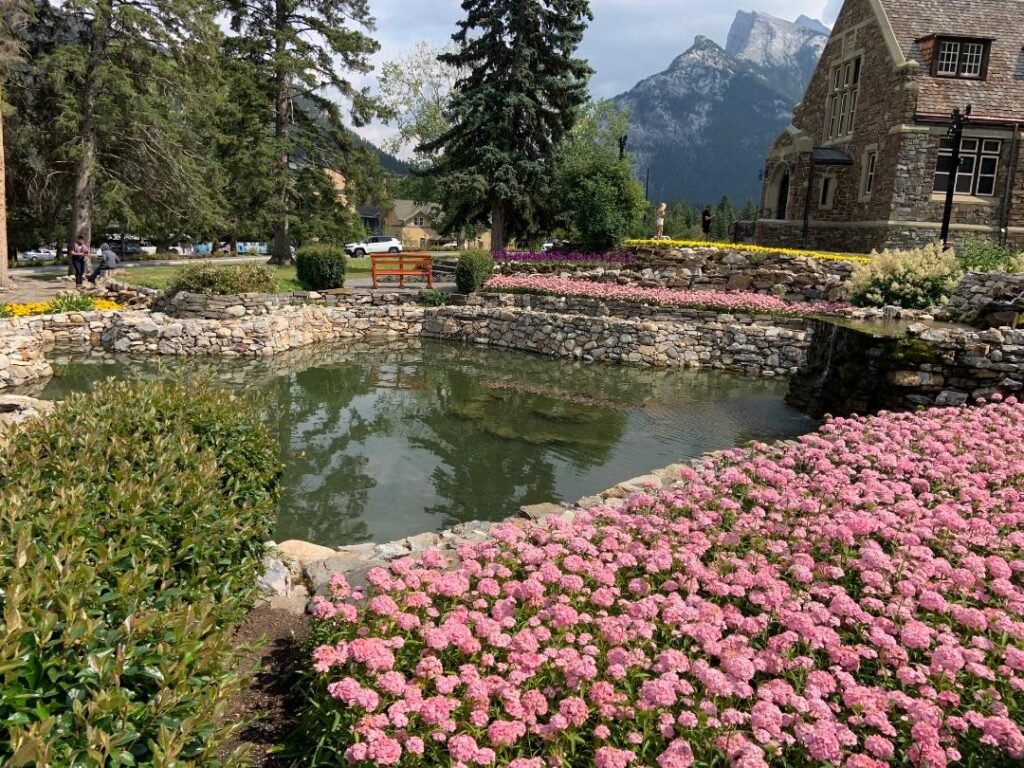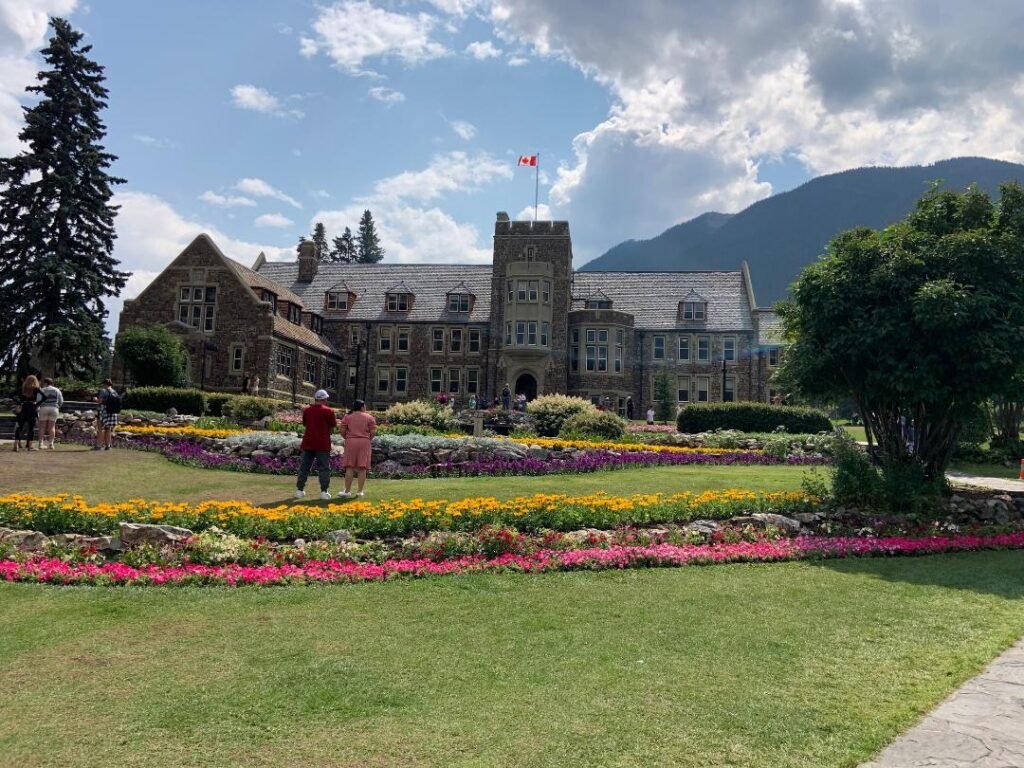Banff National Park has the distinction of being Canada’s first national park which was established in 1885. The first construction of the park started in 1886.
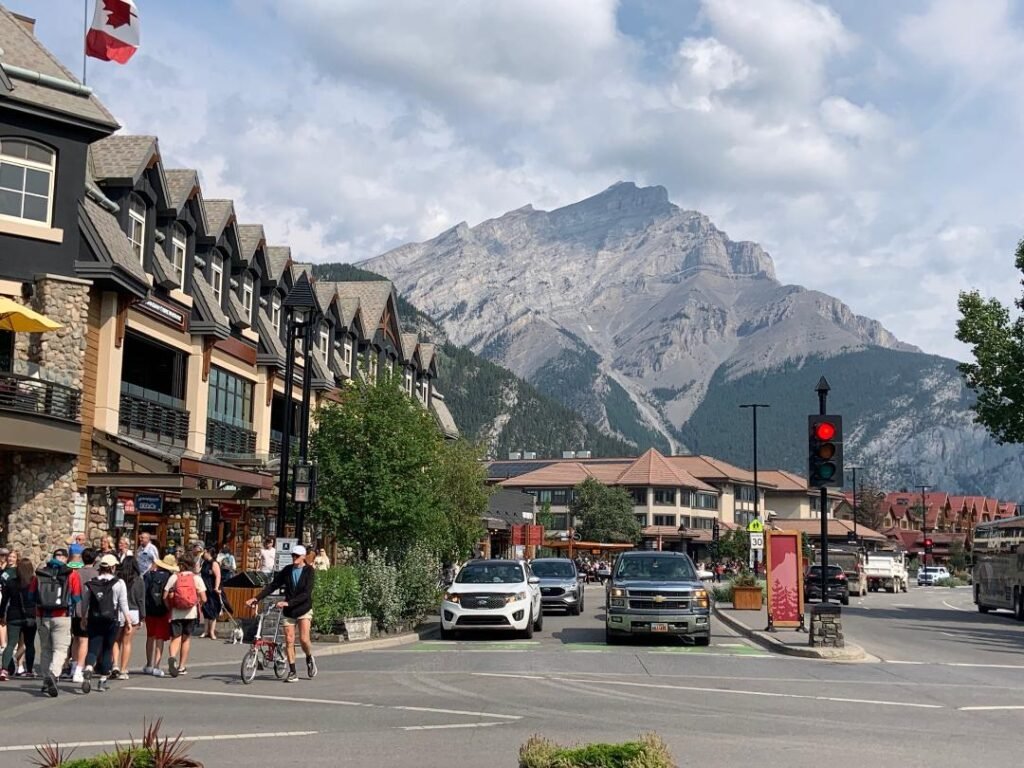
In the very beginning Banff was a twenty-six square kilometer hot springs reserve. Also in the beginning all of these hot springs in Banff were privately owned. This all changed when the Canadian Government bought up the land to create Banff National Park in 1885. Since the hot springs were within the patk boundaries the government acquired ownership of the hot springs.
The area of Banff National Park today comprises 6,641 square kilometers. The park is located in the heart of the Canadian Rockies and with that offers some of the best mountain scenery found anywhere in North America. Additionally, the United Nations designated this area of the Canadian Rockies as a United Nations Educational, Scientific, and Cultural Organization (UNESCO) World Heritage Site in 1984.
The Town of Banff
Banff became a municipality and incorporated in 1990. The town of Banff became the first municipality in Canada to be incorporated within a national park. The town of Jasper in Canada’s Rocky Mountains and relatively close to Banff is the only other municipality within a national park which was incorporated in 2001 within Jasper National Park.
Banff is a very large tourist destination for people from all over the world. The town and national park are relatively easy to get to since it is only about a two hour drive west from Calgary Alberta. Rail is another way to visit Banff. The Rocky Mountaineer and VIA rail offer passengers unparalleled views of the Canadian Rockies. Banff tours from Vancouver feature some of the country’s great rail journeys:
Each year, millions of visitors come to Banff to marvel at the emerald waters of Lake Louise, walk amongst the flower-filled heavens at Sunshine Meadows, and drive beneath the towering jagged peaks lining the Icefields Parkway.
The Banff Gondola
Riding to the top of Sulpher Mountain on the Banff Gondola is a must when visiting Banff. The Banff Gondola is located just a ten minute drive from the town of Banff and is the perfect way to view the entire area from about 7,500 ft above sea level.
Each gondola cabin holds up to 4 passengers. Once you reach the top, you’ll experience three hundred and sixty degree views of six beautiful mountain ranges In addition to that, there are wooden decks and pathways to explore, great photo opportunities and two restaurants available for casual or elevated dining. It’s the perfect dining experience as you watch the sun set behind the mountains.
Banff Canoe Trip
Another fun activity in Banff is taking a guided adventure through Banff National Park with a Big Canoe Tour. The tour takes place in the heart of Banff National Park on the Bow River and here again you’ll have the opportunity to enjoy beautiful mountain vistas, dense forests, and plenty of wildlife. You’ll also hear stories about the local history, ecology, and indigenous culture.
Cascade Gardens
Be ready to take some great photos when you visit the Cascade Gardens overlooking Banff Avenue. Originally named the Cascade of Tome Gardens, they are located past the main street bridge on the south end of town.
The Cascade Gardens were built almost a century ago, and located just across the Bow River from downtown Banff, the gardens were designed and constructed with thoughtfulness and dedication that is still evident today. The Parks Administration Building is located just above the gardens. For an in depth history of the Cascade Gardens you may want to visit rockytales.com/posts/cascade-gardens
Dining in Banff National Park
Your choice of dining in Banff is world class. Elegant dining rooms in beautiful hotels, cozy bistros and modern restaurants along with brew pubs in the town center offer a wide and diverse choice. Take the opportunity to taste an authentic Canadian food experience with the lovely backdrop of the Canadian Rockies. From the top of Sulphur Mountain to the center of Banff, you’ll find the perfect dining experience. The link below will give you a list of some unique restaurants to choose from in Banff National Park.
https://www.banfflakelouise.com/blog/7-most-scenic-restaurants-banff-and-lake-louise
Trips Into History searches for various products that we feel the traveling and historic enthusiast community in general can benefit from. As an Amazon Affiliate, Trips Into History earns a commission from qualifying purchases through our links, at no cost to you.
Fodor’s Canadian Rockies: with Calgary, Banff, and Jasper National Parks (Full-color Travel Guide)
(Photos and article copyright Trips Into History)

